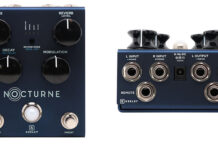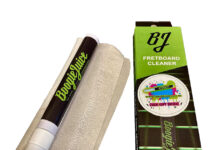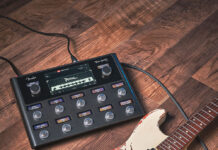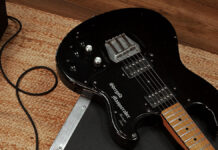Watch the Beatles Dissect "Tomorrow Never Knows" in the Nineties
In the mid-Nineties, while Paul McCartney, George Harrison and Ringo Starr were working on the Beatles’ massive Anthology project, they got together with George Martin, their old producer, at Abbey Road Studios to discuss and dissect a few classic Beatles tracks.
In the incredible clip below, you can watch as they go through the various parts of John Lennon’s Revolver masterpiece, “Tomorrow Never Knows,” a song that signaled the band’s new direction for 1966.
At the 1:10 mark, watch as Martin and McCartney grab the faders to reveal the many different layers of “Tomorrow Never Knows.”
“People tend to credit John with the backwards recordings, the loops and the weird sound effects, but the tape loops were my thing,” McCartney says in Barry Miles’ Many Years From Now. “The only thing I ever used them on was ‘Tomorrow Never Knows.’ It was nice for this to leak into the Beatle stuff as it did. We ran the loops and then we ran the track of ‘Tomorrow Never Knows’ and we played the faders, and just before you could tell it was a loop, before it began to repeat a lot, I’d pull in one of the other faders, and so, using the other people, ‘You pull that in there,’ ‘You pull that in,’ we did a half random, half orchestrated playing of the things and recorded that to a track on the actual master tape, so that if we got a good one, that would be the solo. We played it through a few times and changed some of the tapes till we got what we thought was a real good one. I think it is a great solo.”
Rumor has it that McCartney’s “Tomorrow Never Knows” guitar parts are actually transplants from “Taxman.”
Titled simply “Mark 1” at the time recording commenced on April 6, 1966, the song was the product of Lennon’s experience with LSD, which he’d taken the previous January. Using lines from The Psychedelic Experience, an LSD manual based on the Tibetan Book of the Dead, he wrote the song as a mantra composed of one repeating melody line over driving bass and drum track.
“It’s only got the one chord, and the whole thing is meant to be like a drone,” Lennon told Martin and EMI engineer Geoff Emerick. Additionally, he explained, he wanted his voice to sound “like the Dalai Lama chanting from a mountaintop.”
Says Emerick, “I was thinking, Well, I’ve got an echo chamber and … that’s all! I didn’t know what I was going to do. And suddenly, there it was, staring me in the face!” “It” was the studio’s Leslie rotary speaker cabinet, a standard piece of equipment for organs but one that had never been used for any other instrument or for voice. As Lennon’s voice came swirling through the Leslie, the assembled group listened in awe from the control room. “It’s the Dalai Lennon!” exclaimed McCartney.
Source: www.guitarworld.com










